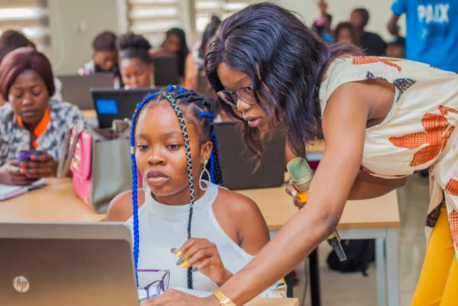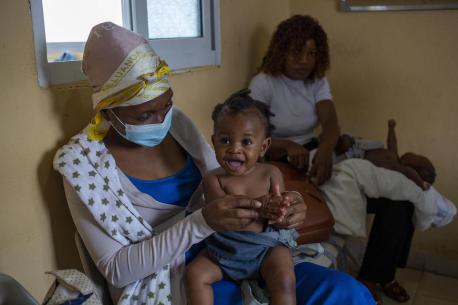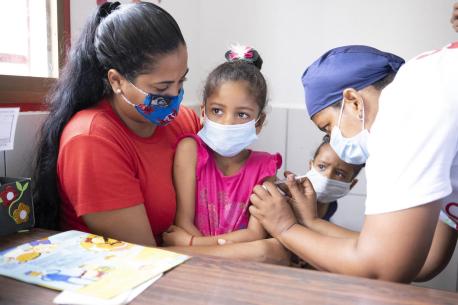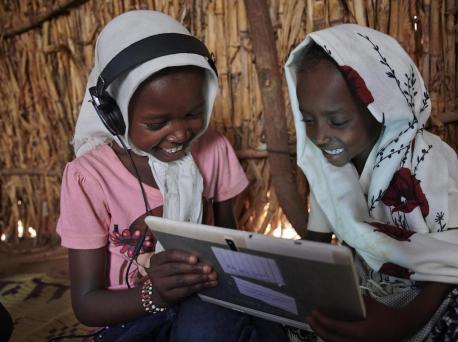
Giga Initiative: Connecting the World's Schools to the Internet
COVID-19 deepened educational inequality through the digital divide. How UNICEF, UN agency ITU and other partners are working to ensure that every student has access to information, opportunity and choice.
The COVID-19 pandemic interrupted the educations of more than 91 percent of students worldwide, exposing widening educational inequalities.
When schools shut down around the world to prevent the spread of the novel coronavirus, many switched to remote instruction. UNICEF got to work, keeping children learning through TV, radio and other innovative delivery methods.
The flexibility and interactivity of online instruction have made it a popular alternative when in-person classes are not possible, but two-thirds of school age children — at least 1.3 billion globally ages 3–17 — lack connectivity at home, according to a report by UNICEF and the International Telecommunication Union, How Many Children and Youth Have Internet Access at Home?
Closing the digital divide requires global cooperation, leadership and innovation
Even before the appearance of COVID-19, UNICEF recognized the need to address education for vulnerable children and digital exclusion.
In 2019, UNICEF and ITU launched Giga, a global initiative to connect every school in the world to the internet and every student to information, opportunity and choice by 2030. The benefit for children who can't access the web is life changing.
“Lack of connectivity doesn’t just limit children and young people’s ability to connect online, it prevents them from competing in the modern economy," former UNICEF Executive Director Henrietta Fore said. "It isolates them from the world."
The digital divide is more than a gap, Fore added, “It is a digital canyon."
As a result, they have fewer resources to learn and to grow and limited opportunities to reach their full potential.
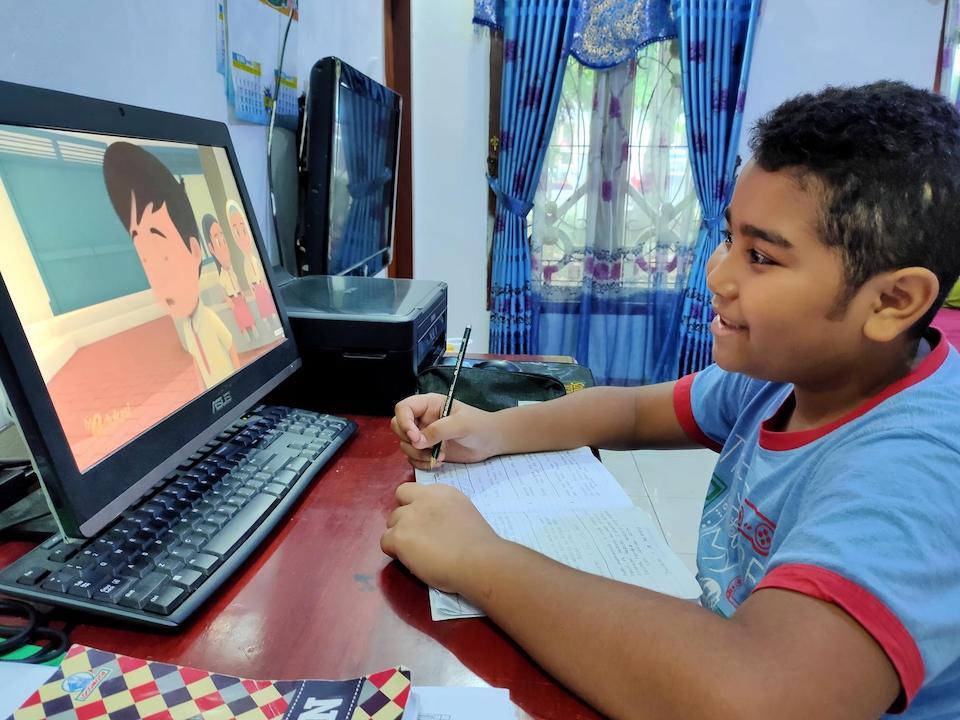
Mapping schools worldwide to assess demand and infrastructure
Working in partnership with governments, Giga is mapping the connectivity demand, using schools as a base point, and identifying where there are connectivity gaps.
This information, combined with existing ITU mapping data, allows countries to take stock of their existing infrastructure and assess appropriate solutions for connecting schools. More than 1 million schools in 41 countries have been mapped through Project Connect, a mapping and connectivity monitoring platform.
In partnership with industry, Giga advises on the best possible technical solutions to provide schools with connectivity and countries with safe, secure, reliable, fit-for-purpose infrastructure to support future digital development needs. UNICEF USA partner Dell Technologies has played a vital role since 2021, assisting with mapping connectivity demand as well as investing in technology and providing financial and technical support.
Giga's support for governments includes advisory services on building affordable and sustainable country-specific models for finance and delivery, subsidizing market creation costs and incentivizing private sector investment.
How has Giga helped specific countries so far? Some examples:
- In Kyrgyzstan: All 2,180 public schools have been mapped; 2,061 are connected. Giga has also helped the government of Kyrgyzstan generate $200,000 in savings per year 40 percent of its education connectivity budget. By seeing all the schools on a map and their corresponding connectivity, the government was able to renegotiate contracts and subsequently reduce prices by almost half, from $50 per month to $28.50 per month, and to almost double speeds, from 2Mbps to 4Mbps.
- In Niger: Giga developed an algorithm to approximate the location of unmapped schools in Niger based on other available data. The algorithm estimated the location of 4,758 previously unmapped schools and overlaid this with electricity data to show where schools had access. In Niamey, implementers used very high-resolution stereo imagery to calculate building heights, providing important information for infrastructure installation planning.
- In Sierra Leone, all schools have been mapped and 205 schools connected; the team is working with the government to map distance from communities to schools to points of connectivity while also identifying other factors that impact learning outcomes. A browser extension developed by Giga and mLabs has been launched in seven schools and will be deployed in 52 more and is being expanded to connected schools in other countries as well.
- In Honduras: 1,097 schools not part of official government registries have been identified and mapped using satellite imagery, and 545 schools have been connected.
- In Colombia: Giga applied artificial intelligence techniques to automatically map schools from satellite imagery, helping the government locate 7,000 schools that were not part of official datasets.
- In Rwanda: Giga investment in schools-level infrastructure and internet services attracted a private internet service provider to further invest in innovative core broadband infrastructure — Fixed wireless — to reach remote schools with high-speed internet, by procuring connectivity through a common bid. This led to an up to 55 percent reduction in the average price per Mbps for schools, from an average of $20 to between $9 and $14 per Mbps.
Meaningful connectivity will fast track young people's access to educational resources and opportunities
For UNICEF and its partners, COVID-19 makes it clearer than ever that reliable access to educational opportunities and the internet should be a universal human right. And the Giga initiative for connecting children and young people to the internet shows tremendous potential for return on investment:
- $2.1 billion can connect 260,000 schools in 11 high-impact countries in the next year to reach an estimated 65 million children and young people
- $8 billion can connect 1 million schools over the next two years to reach an estimated 250 million children and young people
"Digital technologies can dramatically improve the lives of people and communities and deliver on the promise of the United Nations Agenda 2030 to leave no one behind," says Doreen Bogdan-Martin, Director of ITU's Telecommunication Development Bureau.
Multi-stakeholder collaboration and partnership will be key to connecting the 2.9 billion people still off-line.
"We all have to work together and increase our efforts to bring technology to the people, in every area and every walk of life."
